Don't wanna be here? Send us removal request.
Video
Espero recorrer mucho en la vida, gracias querido DIOS https://www.instagram.com/p/BXhJOXFlll1trV1ZolhfQ76e1vb4nP-HzIJMR00/?utm_source=ig_tumblr_share&igshid=nhmqnq8maisv
10 notes
·
View notes
Photo

The view from the surface of asteroid Ryugu [480x640]
98 notes
·
View notes
Text
870 notes
·
View notes
Text
Gamma-ray Bursts: Black Hole Birth Announcements
Gamma-ray bursts are the brightest, most violent explosions in the universe, but they can be surprisingly tricky to detect. Our eyes can’t see them because they are tuned to just a limited portion of the types of light that exist, but thanks to technology, we can even see the highest-energy form of light in the cosmos — gamma rays.
So how did we discover gamma-ray bursts?
Accidentally!
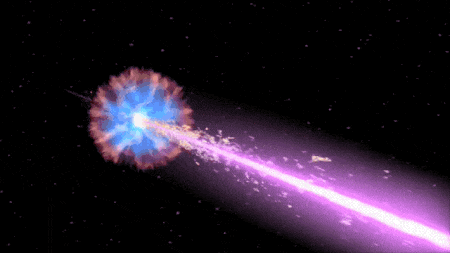
We didn’t actually develop gamma-ray detectors to peer at the universe — we were keeping an eye on our neighbors! During the Cold War, the United States and the former Soviet Union both signed the Nuclear Test Ban Treaty of 1963 that stated neither nation would test nuclear weapons in space. Just one week later, the US launched the first Vela satellite to ensure the treaty wasn’t being violated. What they saw instead were gamma-ray events happening out in the cosmos!

Things Going Bump in the Cosmos
Each of these gamma-ray events, dubbed “gamma-ray bursts” or GRBs, lasted such a short time that information was very difficult to gather. For decades their origins, locations and causes remained a cosmic mystery, but in recent years we’ve been able to figure out a lot about GRBs. They come in two flavors: short-duration (less than two seconds) and long-duration (two seconds or more). Short and long bursts seem to be caused by different cosmic events, but the end result is thought to be the birth of a black hole.
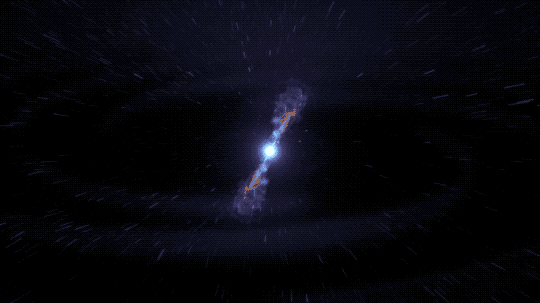
Short GRBs are created by binary neutron star mergers. Neutron stars are the superdense leftover cores of really massive stars that have gone supernova. When two of them crash together (long after they’ve gone supernova) the collision releases a spectacular amount of energy before producing a black hole. Astronomers suspect something similar may occur in a merger between a neutron star and an already-existing black hole.

Long GRBs account for most of the bursts we see and can be created when an extremely massive star goes supernova and launches jets of material at nearly the speed of light (though not every supernova will produce a GRB). They can last just a few seconds or several minutes, though some extremely long GRBs have been known to last for hours!
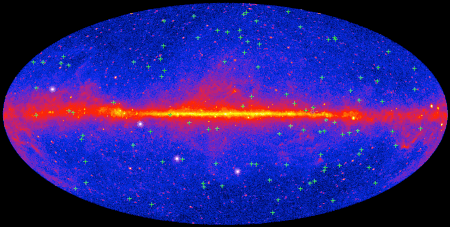
A Gamma-Ray Burst a Day Sends Waves of Light Our Way!
Our Fermi Gamma-ray Space Telescope detects a GRB nearly every day, but there are actually many more happening — we just can’t see them! In a GRB, the gamma rays are shot out in a narrow beam. We have to be lined up just right in order to detect them, because not all bursts are beamed toward us — when we see one it’s because we’re looking right down the barrel of the gamma-ray gun. Scientists estimate that there are at least 50 times more GRBs happening each day than we detect!
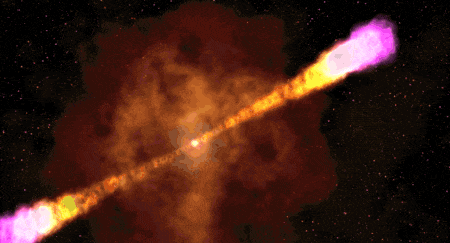
So what’s left after a GRB — just a solitary black hole? Since GRBs usually last only a matter of seconds, it’s very difficult to study them in-depth. Fortunately, each one leaves an afterglow that can last for hours or even years in extreme cases. Afterglows are created when the GRB jets run into material surrounding the star. Because that material slows the jets down, we see lower-energy light, like X-rays and radio waves, that can take a while to fade. Afterglows are so important in helping us understand more about GRBs that our Neil Gehrels Swift Observatory was specifically designed to study them!
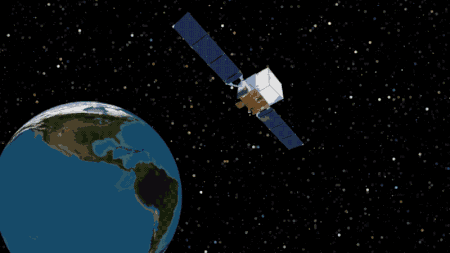
Last fall, we had the opportunity to learn even more from a gamma-ray burst than usual! From 130 million light-years away, Fermi witnessed a pair of neutron stars collide, creating a spectacular short GRB. What made this burst extra special was the fact that ground-based gravitational wave detectors LIGO and Virgo caught the same event, linking light and gravitational waves to the same source for the first time ever!
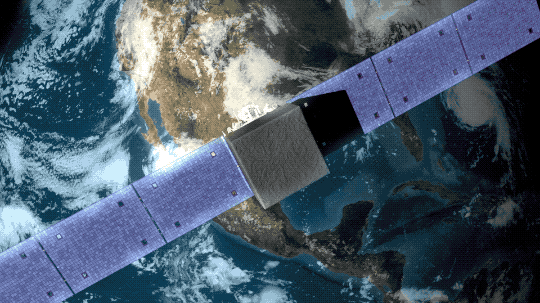
For over 10 years now, Fermi has been exploring the gamma-ray universe. Thanks to Fermi, scientists are learning more about the fundamental physics of the cosmos, from dark matter to the nature of space-time and beyond. Discover more about how we’ll be celebrating Fermi’s achievements all year!
Make sure to follow us on Tumblr for your regular dose of space: http://nasa.tumblr.com
4K notes
·
View notes
Text
5 Out-of-This World Technologies Developed for Our Webb Space Telescope
Our James Webb Space Telescope is the most ambitious and complex space science observatory ever built. It will study every phase in the history of our universe, ranging from the first luminous glows after the Big Bang, to the formation of solar systems capable of supporting life on planets like Earth, to the evolution of our own Solar System.
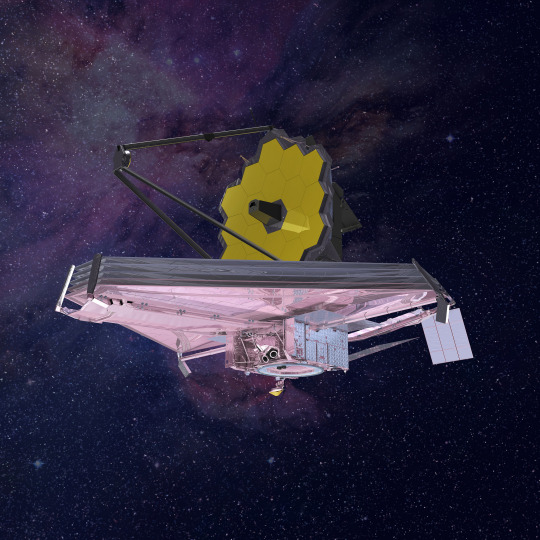
In order to carry out such a daring mission, many innovative and powerful new technologies were developed specifically to enable Webb to achieve its primary mission.
Here are 5 technologies that were developed to help Webb push the boundaries of space exploration and discovery:
1. Microshutters
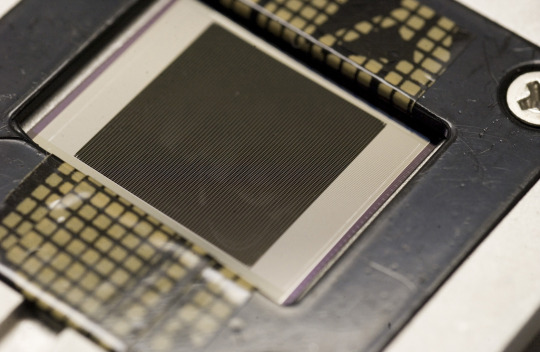
Microshutters are basically tiny windows with shutters that each measure 100 by 200 microns, or about the size of a bundle of only a few human hairs.
The microshutter device will record the spectra of light from distant objects (spectroscopy is simply the science of measuring the intensity of light at different wavelengths. The graphical representations of these measurements are called spectra.)

Other spectroscopic instruments have flown in space before but none have had the capability to enable high-resolution observation of up to 100 objects simultaneously, which means much more scientific investigating can get done in less time.
Read more about how the microshutters work HERE.
2. The Backplane
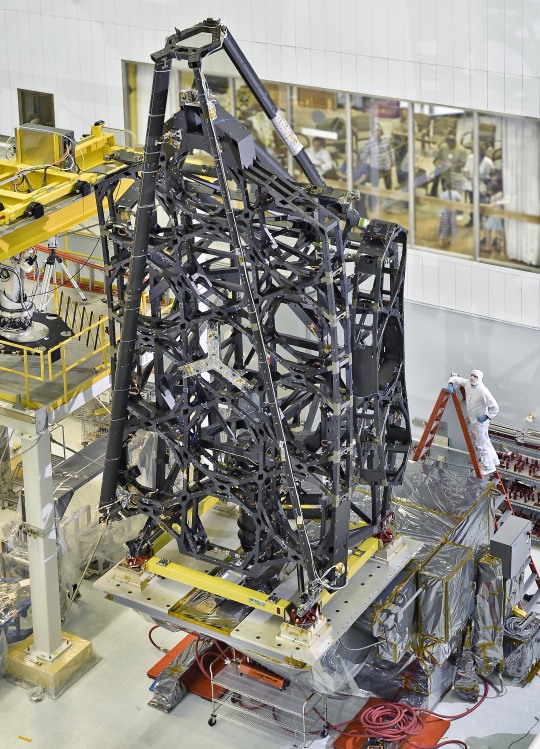
Webb’s backplane is the large structure that holds and supports the big hexagonal mirrors of the telescope, you can think of it as the telescope’s “spine”. The backplane has an important job as it must carry not only the 6.5 m (over 21 foot) diameter primary mirror plus other telescope optics, but also the entire module of scientific instruments. It also needs to be essentially motionless while the mirrors move to see far into deep space. All told, the backplane carries more than 2400kg (2.5 tons) of hardware.
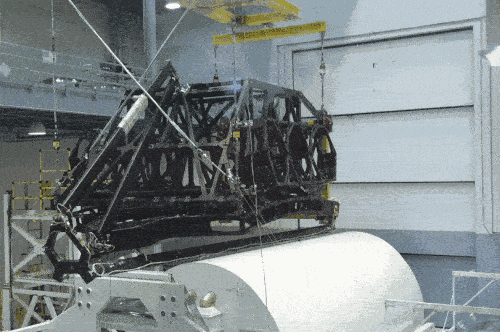
This structure is also designed to provide unprecedented thermal stability performance at temperatures colder than -400°F (-240°C). At these temperatures, the backplane was engineered to be steady down to 32 nanometers, which is 1/10,000 the diameter of a human hair!
Read more about the backplane HERE.
3. The Mirrors
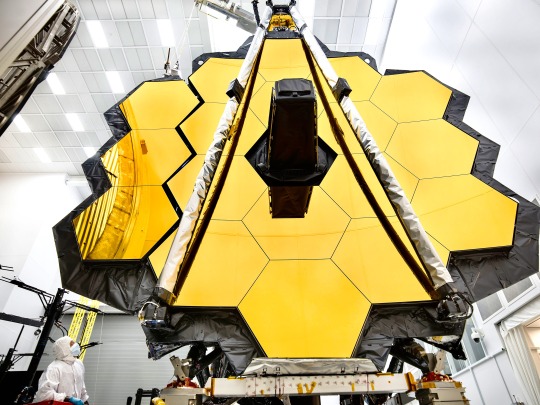
One of the Webb Space Telescope’s science goals is to look back through time to when galaxies were first forming. Webb will do this by observing galaxies that are very distant, at over 13 billion light years away from us. To see such far-off and faint objects, Webb needs a large mirror.
Webb’s scientists and engineers determined that a primary mirror 6.5 meters across is what was needed to measure the light from these distant galaxies. Building a mirror this large is challenging, even for use on the ground. Plus, a mirror this large has never been launched into space before!
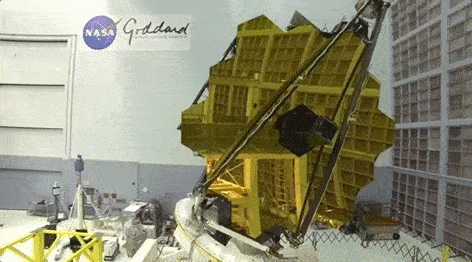
If the Hubble Space Telescope’s 2.4-meter mirror were scaled to be large enough for Webb, it would be too heavy to launch into orbit. The Webb team had to find new ways to build the mirror so that it would be light enough - only 1/10 of the mass of Hubble’s mirror per unit area - yet very strong.
Read more about how we designed and created Webb’s unique mirrors HERE.
4. Wavefront Sensing and Control

Wavefront sensing and control is a technical term used to describe the subsystem that was required to sense and correct any errors in the telescope’s optics. This is especially necessary because all 18 segments have to work together as a single giant mirror.
The work performed on the telescope optics resulted in a NASA tech spinoff for diagnosing eye conditions and accurate mapping of the eye. This spinoff supports research in cataracts, keratoconus (an eye condition that causes reduced vision), and eye movement – and improvements in the LASIK procedure.
Read more about the tech spinoff HERE.
5. Sunshield and Sunshield Coating
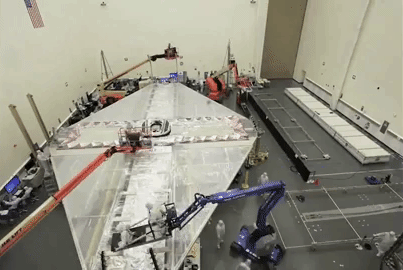
Webb’s primary science comes from infrared light, which is essentially heat energy. To detect the extremely faint heat signals of astronomical objects that are incredibly far away, the telescope itself has to be very cold and stable. This means we not only have to protect Webb from external sources of light and heat (like the Sun and the Earth), but we also have to make all the telescope elements very cold so they don’t emit their own heat energy that could swamp the sensitive instruments. The temperature also must be kept constant so that materials aren’t shrinking and expanding, which would throw off the precise alignment of the optics.
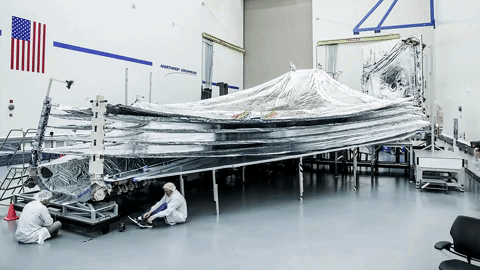
Each of the five layers of the sunshield is incredibly thin. Despite the thin layers, they will keep the cold side of the telescope at around -400°F (-240°C), while the Sun-facing side will be 185°F (85°C). This means you could actually freeze nitrogen on the cold side (not just liquify it), and almost boil water on the hot side. The sunshield gives the telescope the equivalent protection of a sunscreen with SPF 1 million!
Read more about Webb’s incredible sunshield HERE.
Learn more about the Webb Space Telescope and other complex technologies that have been created for the first time by visiting THIS page.
For the latest updates and news on the Webb Space Telescope, follow the mission on Twitter, Facebook and Instagram.
Make sure to follow us on Tumblr for your regular dose of space: http://nasa.tumblr.com.
4K notes
·
View notes
Text
Hunting for Organic Molecules on Mars
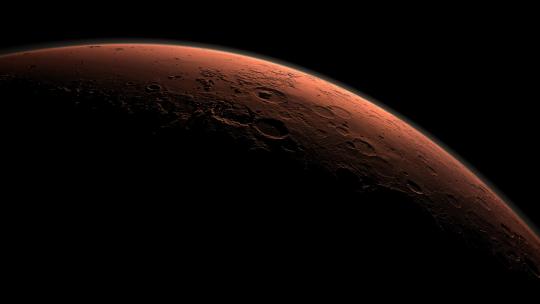
Did Mars once have life? To help answer that question, an international team of scientists created an incredibly powerful miniature chemistry laboratory, set to ride on the next Mars rover.

The instrument, called the Mars Organic Molecule Analyzer Mass Spectrometer (MOMA-MS), will form a key part of the ExoMars Rover, a joint mission between the European Space Agency (ESA) and Roscosmos. A mass spectrometer is crucial to send to Mars because it reveals the elements that can be found there. A Martian mass spectrometer takes a sample, typically of powdered rock, and distinguishes the different elements in the sample based on their mass.

After 8 years of designing, building, and testing, NASA scientists and engineers from NASA’s Goddard Space Flight Center said goodbye to their tiny chemistry lab and shipped it to Italy in a big pink box. Building a tiny instrument capable of conducting chemical analysis is difficult in any setting, but designing one that has to launch on a huge rocket, fly through the vacuum of space, and then operate on a planet with entirely different pressure and temperature systems? That’s herculean. And once on Mars, MOMA has a very important job to do. NASA Goddard Center Director Chris Scolese said, “This is the first intended life-detecting instrument that we have sent to Mars since Viking.”

The MOMA instrument will be capable of detecting a wide variety of organic molecules. Organic compounds are commonly associated with life, although they can be created by non-biological processes as well. Organic molecules contain carbon and hydrogen, and can include oxygen, nitrogen, and other elements.

To find these molecules on Mars, the MOMA team had to take instruments that would normally occupy a couple of workbenches in a chemistry lab and shrink them down to roughly the size of a toaster oven so they would be practical to install on a rover.
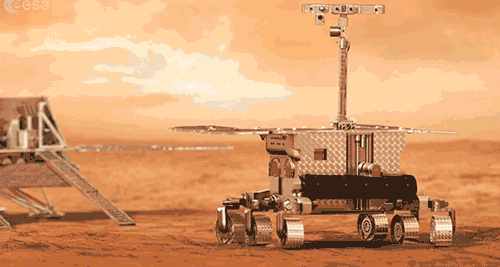
MOMA-MS, the mass spectrometer on the ExoMars rover, will build on the accomplishments from the Sample Analysis at Mars (SAM), an instrument suite on the Curiosity rover that includes a mass spectrometer. SAM collects and analyzes samples from just below the surface of Mars while ExoMars will be the first to explore deep beneath the surface, with a drill capable of taking samples from as deep as two meters (over six feet). This is important because Mars’s thin atmosphere and spotty magnetic field offer little protection from space radiation, which can gradually destroy organic molecules exposed on the surface. However, Martian sediment is an effective shield, and the team expects to find greater abundances of organic molecules in samples from beneath the surface.
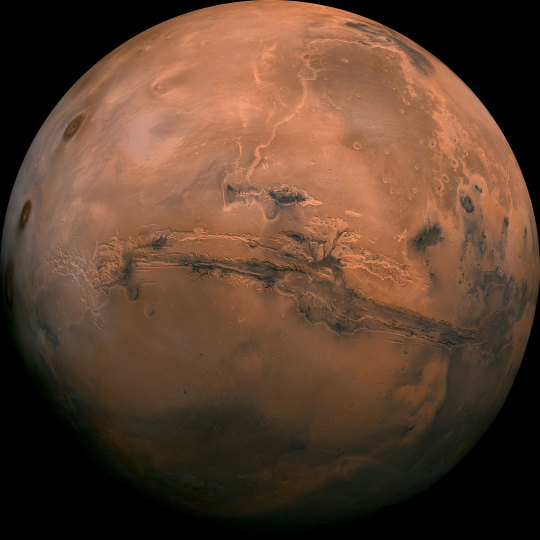
On completion of the instrument, MOMA Project Scientist Will Brinckerhoff praised his colleagues, telling them, “You have had the right balance of skepticism, optimism, and ambition. Seeing this come together has made me want to do my best.”
In addition to the launch of the ESA and Roscosmos ExoMars Rover, in 2020, NASA plans to launch the Mars 2020 Rover, to search for signs of past microbial life. We are all looking forward to seeing what these two missions will find when they arrive on our neighboring planet.
youtube
Learn more about MOMA HERE.
Learn more about ExoMars HERE.
Follow @NASASolarSystem on Twitter for more about our missions to other planets.
Make sure to follow us on Tumblr for your regular dose of space: http://nasa.tumblr.com.
3K notes
·
View notes
Photo

Jeans, boots, socks . ..¡pela la verga! Al final compre shorts...
0 notes







